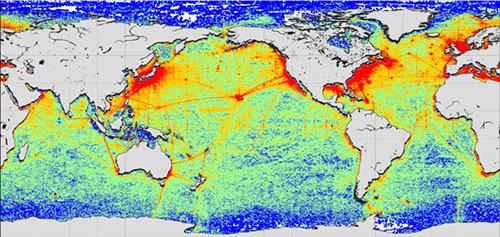 |
| The Ocean According To Measurements |
I. Update Of WOD Data
This Dredd Blog series has focused on the countries of the world with seaports (Seaports With Sea Level Change, 2, 3, 4, 5, 6), but today we focus a bit more on seacoast types.
That is because sea level change impact on countries is arguably one of the more serious issues of our time (Why Sea Level Rise May Be The Greatest Threat To Civilization, 2, 3, 4, 5, 6, 7).
Today's HTML files bring us up to date, up to the 2019 in situ measurements stored in the World Ocean Database (WOD), concerning coastal ocean heat.
II. What Now?
Based on the mean averages of 5.5 billion in situ measurements from around the globe, the displays in today's appendices focus on the "ocean heat content" (a.k.a. "potential enthalpy") trends.
The TEOS-10 calculations are mean averages of 33 depth levels condensed into the five pelagic depths (In Search Of Ocean Heat - 7).
III. The Appendices
The HTML table appendices are arranged by countries with only one coastline type, and countries with more than one coastline type, as well as being arranged alphabetically:
| Single-Coastline Countries | Multi-Coastline Countries |
| Appendix: A - E | Appendix: A - E |
| Appendix: F - J | Appendix: F - J |
| Appendix: K - O | Appendix: K -O |
| Appendix: P - T | Appendix: P - T |
| Appendix: U -Z | Appendix: U - Z |
A "Legend" appears at the top of each appendix to inform you of the contents of the tables.
IV. Closing Comments
One of the striking things that I noticed while doing this series is that we know more about Mars and the Moon than we know about the deepest depths of our own planet's oceans.
You can see that as you peer through the measurement tables where the Abyssopelagic and Hadopelagic depths are for the most part empty.
That is tragic because according to the laws of thermodynamics "heat flows to cold" so that is where the increasing ocean heat content is headed (lots of it is already there).
The next post in this series is here, the previous post in this series is here.
"Antarctica Melts Under Its Hottest Days on Record" (link)
ReplyDelete